
The inhabitants of the Sheep Islands, better known as the Faroe Islands, celebrate the beginning of spring with the punctual return of the oystercatcher each March 12. On the archipelago in the North Sea, the wading bird called “Tjaldur” by the locals has been the official national bird since the beginning of the 19th century.
There are a total of twelve oystercatcher species worldwide. They are either black and white or solid black in color. The European oystercatcher is unmistakable. While the head, the upper side of the body and the wings are black, the underside is white. The long, pincer-like beak, legs and its eyes are red. Until sexual maturity at about 4 years of age, the bill and legs are not yet colored red and the plumage has light spots. The female has a slightly longer beak, but otherwise the two sexes are hardly distinguishable. The narrow, straight bill is perfect for poking around in the mud and silt for food. The bird inhabits the northern coasts to beyond the Arctic Circle, as well as the entire Atlantic coast and the Mediterranean.
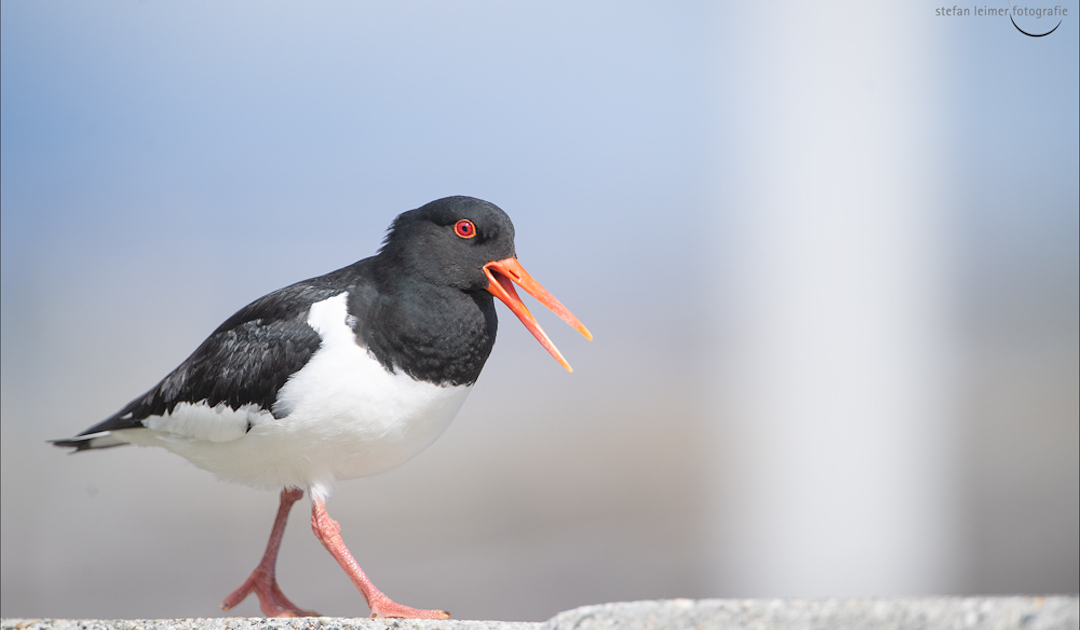
To Andenes on the Norwegian Vesterålen the oystercatcher came only on March 15th. In the early hours of the morning his shrill calls deprived us of sleep. Despite the disturbance of the night… I was happy to see the arrival of the oystercatcher. After all, he is one of my favorite birds to find along the coast here. Of course, there are also puffins or gannets. But you don’t see them on the beaches and certainly not in front of our house. Two pairs of oystercatchers have settled on the beach immediately adjacent to our garden. Their territorial boundary is marked by a boulder, where the two pairs regularly meet to exchange verbal blows.
Because of its black and white plumage, the oystercatcher is associated with the magpie in other languages in relation to its name. Thus, it is called sea magpie in Finnish, beach magpie in Danish, plaice magpie in Dutch, and snipe magpie in Russian. On the west coast of Schleswig-Holstein, the oystercatcher is also called the “Hallig stork”. In comparison with the white stork, there are indeed some similarities: The same colors black/white as well as the long red beak and the behavior when searching for food.
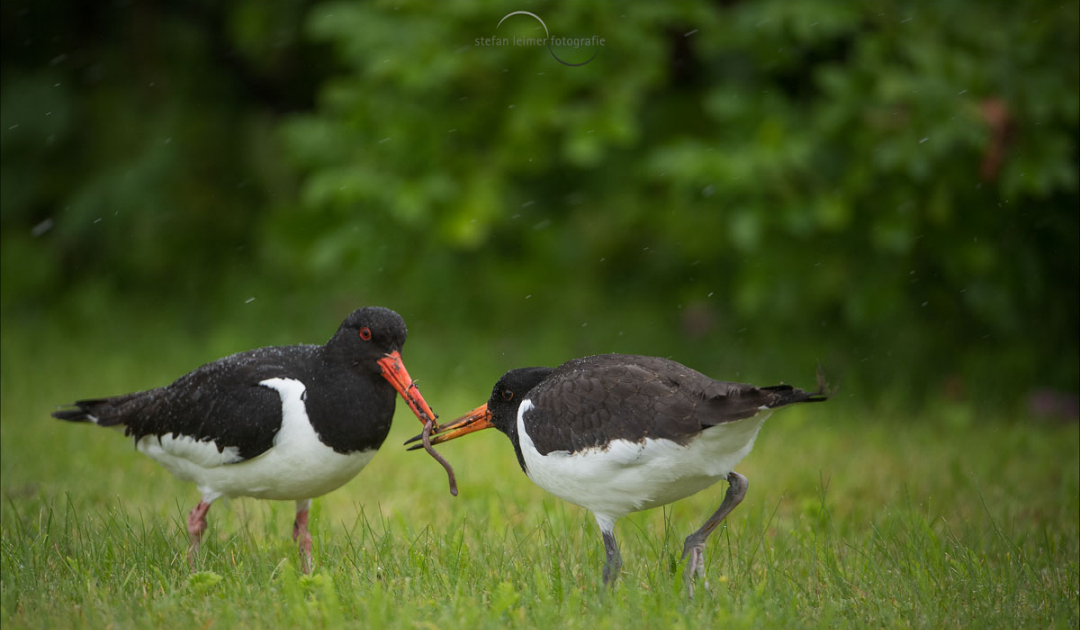
Although the oystercatcher prefers to live in the mudflats, the generic name wader is derived from the way it strides, or wades. However, it does not live up to its name “oystercatcher”. He neither eats oysters, the shell of these mussels is much too hard, nor fishes. On its menu are annelids, crustaceans and mollusks or insects or their larvae. Less frequently, it eats small fish or eggs of other snipe birds. However, further inland they eat mainly earthworms. Its daily rhythm is not determined by day and night, but by the tides. Thus, it is also nocturnal.
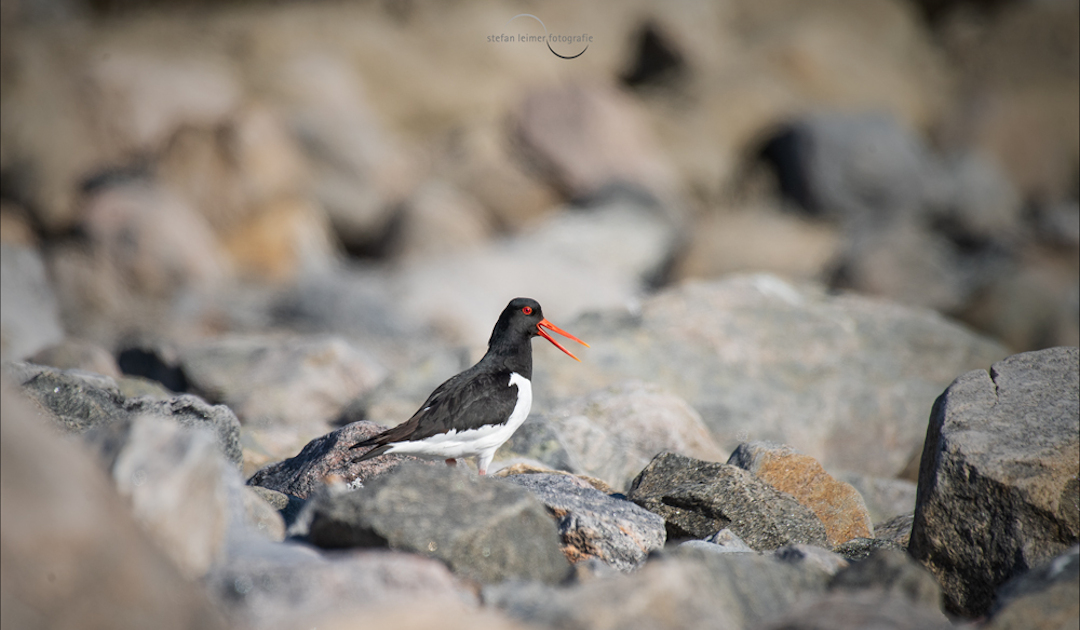
“Our” two pairs behave territorially already before the actual breeding season and defend their respective beach section strongly against conspecifics or other intruders. The beak is directed against the ground and a trilling call is emitted. This serves on the one hand to drive away rivals and on the other hand to greet the pair when they meet again in their territory. In the summer months, thanks to its loud calls, it can be heard 24 hours a day: Or rather… not to be overheard! Now in the spring, the spectacle of group courtship takes place until well into the summer. The birds stand together with their beaks pointing to the ground and walk side by side, finally forming a circle. They call a trilling “kewiik….kewiik….kwiik… kwirrr” in an increasing tempo. This performance is also called a trill ceremony.

Already in late winter, the pairs leave their winter flock and occupy their future territory. Ringed animals have shown that oystercatchers remain faithful to their favorite breeding site near the shore for years, often for their entire lives, and defend it vehemently. Contradictory to this, however, is the fact that pairs of oystercatchers occasionally allow gulls, terns, or other wading birds to lay their eggs in their nests along with their own. Together and alternately, both – oystercatchers and their cooperators – ensure that all eggs are warmed. Such a multicultural division of labor can be recognized by the so-called mixed sites.
As a rule, oystercatchers live in a lifelong, monogamous community. The “nests” are nothing more than small pit of earth in the sections of the beach that lie outside the surf. The oystercatcher simply rubs its belly back and forth on the ground until a depression is made there where it can lay the eggs.
We have repeatedly discovered nesting pits made in the gravel of parking lots, driveways, turnouts, or even on flat roofs during our field trips. Some of the exposed nests on the ground have been marked by concerned locals with red tracking sticks left over from winter to protect them from destruction.
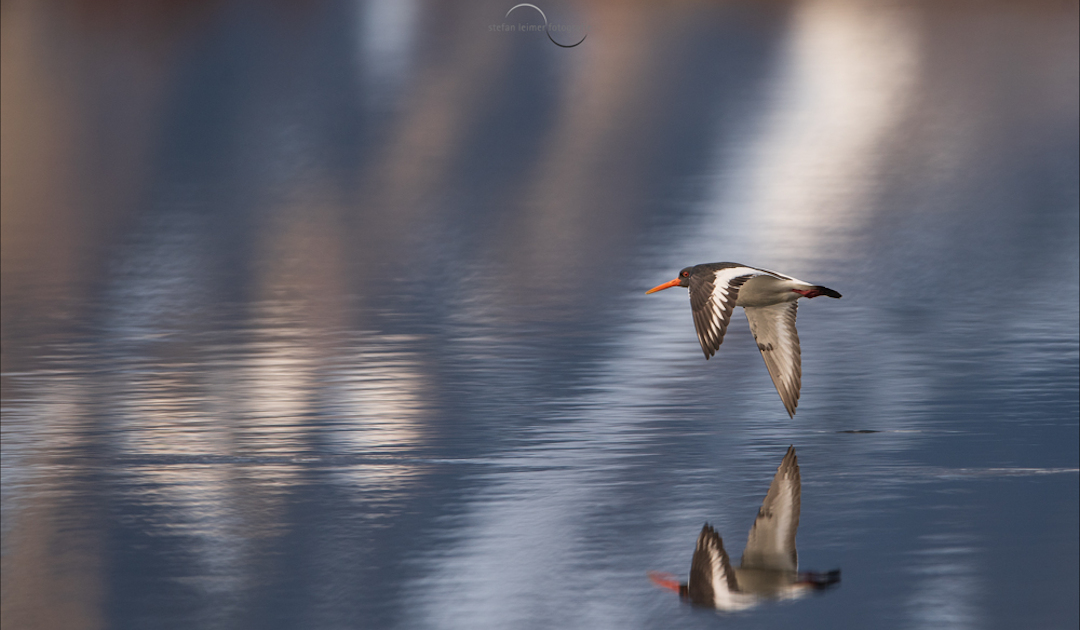
Good camouflage is essential for survival to protect the eggs from predators. The eggs, pale brown with dark spots, are indistinguishable from the ground with a little distance from the nest.
Along many coasts, people provided simple nest boxes for ground nesting birds in the past. Most often a support anchored to the ground and terminated at the top with a rectangular box. An upside-down bucket on the steep also prevents predators from climbing up.
The female lays 3 to 4 eggs, which are slightly smaller than chicken eggs. The pair relieves each other when breeding. After 4 weeks of incubation at the latest, the young hatch. The young birds are nest fledglers and immediately run around, but press themselves flat against the ground in case of danger.
Oystercatchers practice intensive brood care. The young get the food presented or directly handed over. They spend weeks learning from their parents how exactly to open mussels or poke worms out of the ground. It takes several months for a young oystercatcher to become as efficient at foraging as its parents. However, many young oystercatchers fall victim to birds of prey, gulls, martens and foxes in their first weeks. One month after fledging, only about 16 percent of the young birds are still alive.
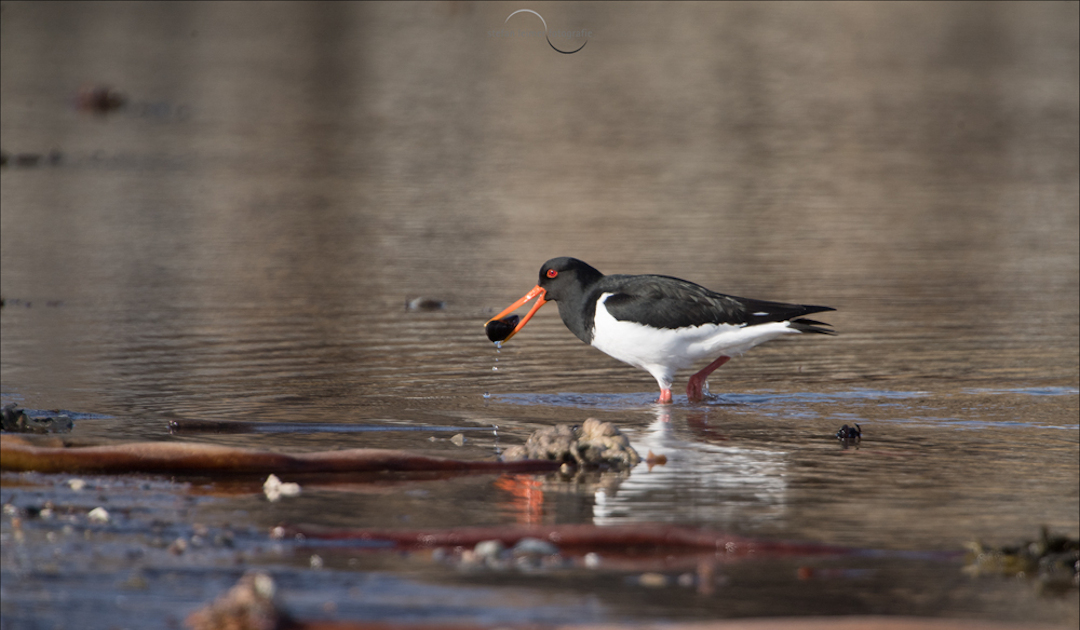
The average life expectancy of the oystercatcher is about twenty years. However, ringed specimens have been found that reached an age of well over thirty years. The record is held by an animal whose ringing dates back to 1949 in the Netherlands. When the animal was found dead in 1993, it had reached a proud age of 44 years. The Wadden Sea of the North Sea is by far the most important habitat of the oystercatcher in Europe. However, the German breeding population has continued to decline over the past 20 years. Scientific research indicates that a major food source for birds, cockles and mussels, is no longer sufficiently available. In addition, oystercatchers along the mainland coast raise too few young because predators such as foxes raid many clutches.

The oystercatcher’s beak is in constant growth and lengthens by about 0.4 mm every day. The two opposing processes of growth and wear thus shape the oystercatcher tool required in each case. That is, the tip of the beak is adapted to the new way of acquiring prey within 14 days. Three different beak shapes can be observed: Awl, hammer or chisel beak. Birds with the sharpened awl beak look for worms, especially in the mudflats, which they detect with tactile cells, the so-called “Herbst’sche Körperchen” (named after the German zoologist Curt Herbst) at the tip of the beak and pull to the surface.
Birds with hammer or chisel bills specialize in mussel food. With their chisel beak, they thrust into an open shell at lightning speed and sever the sphincters of the shell valves. Oystercatchers go coarser with the hammer beak. They hammer the shells of mussels or young cockles with powerful blows to get at the mussel meat. Because mussels quickly sink into the soft substrate of the mudflats during this procedure, they are placed on a hard surface.
The main food of young oystercatchers on the coast are mussels, snails and crabs, which must first be “cracked” before they can be consumed by the animal. However, this requires a fully developed and hardened beak. The young birds in the inland have it much easier. Their main food, earthworms, can be devoured right away without any effort.
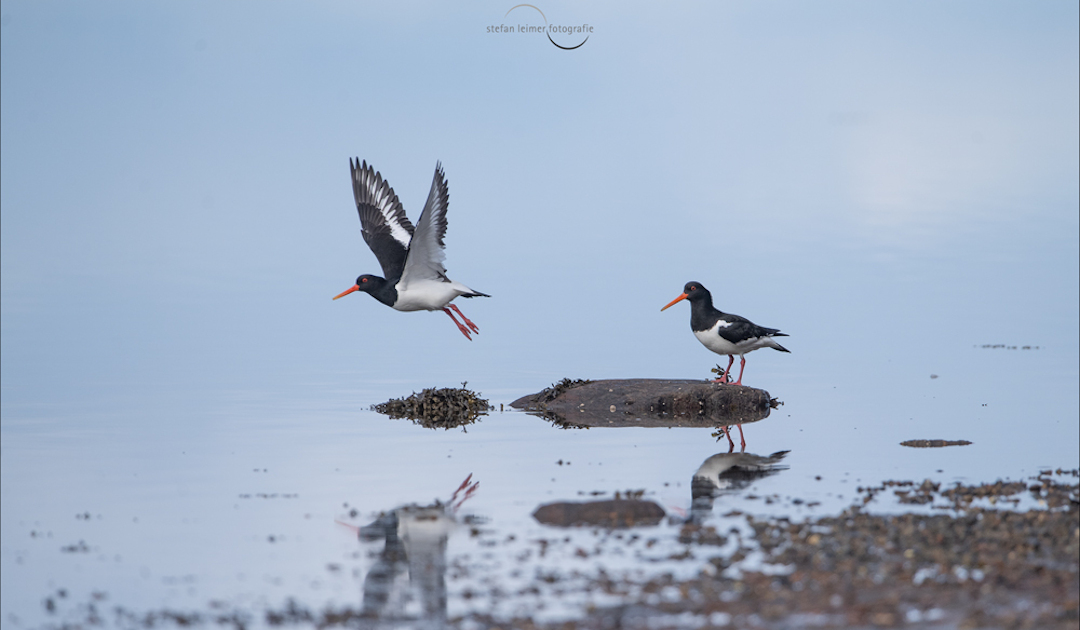
Unfortunately, nothing came of the hoped-for new growth on our doorstep. After returning from a week’s vacation, we unfortunately found that the nest was abandoned and empty. A second brood did not occur.
So we are left only with the hope of a successful brood next year. To improve the odds, I will set up an elevated incubator for my oystercatchers. I have already put an old plastic bucket aside as a precaution.





